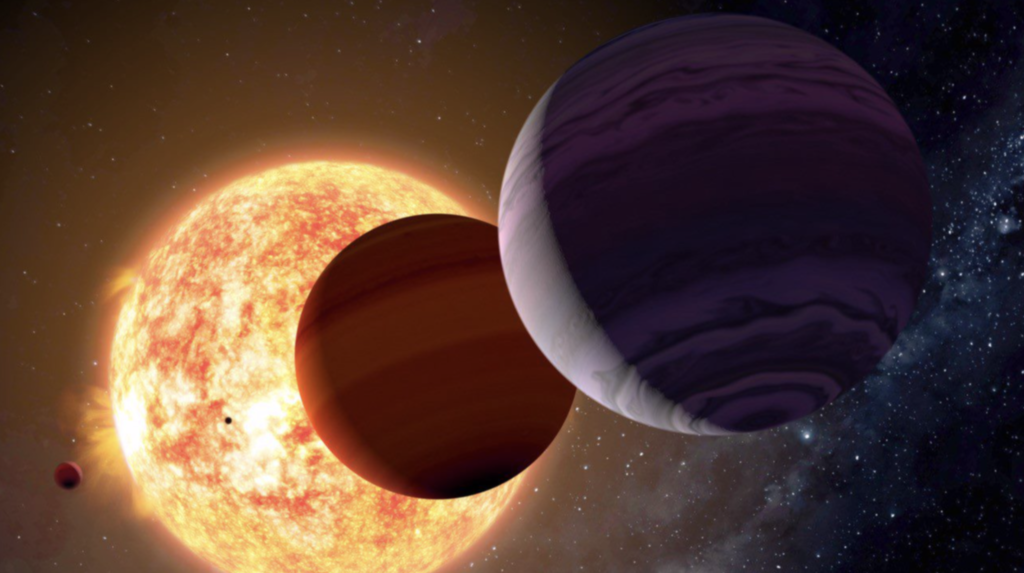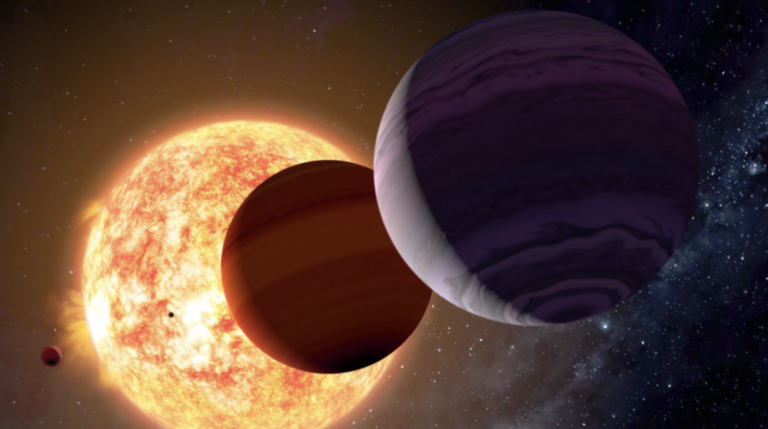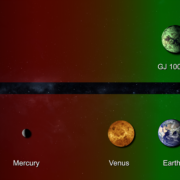An international team of scientists with the participation of the Centro de Astrobiología (CSIC-INTA) and other institutions in Spain, Italy, Germany, Belgium, the United Kingdom and Mexico has measured for the first time the masses of gaseous and giant planets at a very early age in the evolution of planetary systems. V1298 Tau, a solar-type star just 20 million years old, has at least two planets with the mass and size of Jupiter, in contradiction to all current theories that predict that young gaseous planets should be several times larger than observed. The results are published today in the journal Nature Astronomy.
The scientific study, led by Alejandro Suárez Mascareño (Instituto de Astrofísica de Canarias, IAC), has used the technique of precise radial velocity measurements applied to the star V1298 Tau, in the Taurus region and 20 million years old (225 times younger than the solar system), to determine that the two planets with Jovian radii in the V1298 Tau system have masses equal to that of Jupiter (solar system’s largest planet). This result breaks with all the theories of planetary formation and evolution that predict much larger sizes for these infant gaseous planets.
Planets V1298 Tau b and e, originally discovered by a North American team using data from NASA’s Kepler space mission, have Jupiter-like radii. In order to measure their planetary masses, it has been necessary to exquisitely separate the small signals generated by the planets from the stellar footprint, almost ten times larger. “The characterization of very young planets is extraordinarily difficult,” says Alejandro Suárez Mascareño. “Young stars have very high levels of activity; only with advanced analysis techniques is it possible to extract planetary information”.

The radial velocity measurements obtained with the CARMENES instrument (at the 3.5 m diameter telescope on the Calar Alto Observatory in Almería), the HARPS-N and HERMES spectrographs (at the TNG and Mercator telescopes, both on the Roque de los Muchachos Observatory on the island of La Palma), and the STELLA-SES instrument (on the Teide Observatory on the island of Tenerife) confirm masses similar to that of Jupiter for the Jovian-sized planets V1298 Tau b and e, despite their scarce 20 million year old. “Theoretical models have always dictated that giant planets begin their evolution as bodies much larger than Jupiter and later contract over hundreds or even billions of years,” explains Víctor J. Sánchez Béjar (IAC), co-author of the study.
The detailed study of young planetary systems is crucial to understanding the infancy of our solar system. The new results suggest that the planetary contraction is a fast phenomenon and not as slow as previously believed. Planets as massive as Jupiter reach their final volume and density in less than 20 million years. “Only by analyzing systems of different ages, from the youngest to as old as the solar system, will we be able to know the planetary evolution and migration independently of the theory,” says María Rosa Zapatero Osorio, from the Center for Astrobiology (CSIC-INTA) and co-author of the study. Now it is important to extend these studies to other young planetary systems to confirm that V1298 Tau is no exception and to provide the necessary information to correct the theory of the evolution of gaseous and giant planets.
Article: “Rapid contraction of giant planets orbiting the 20 million-years old star V1298 Tau“.
Nature Astronomy, https://www.nature.com/articles/s41550-021-01533-7
DOI: 10.1038/s41550-021-01533-7








